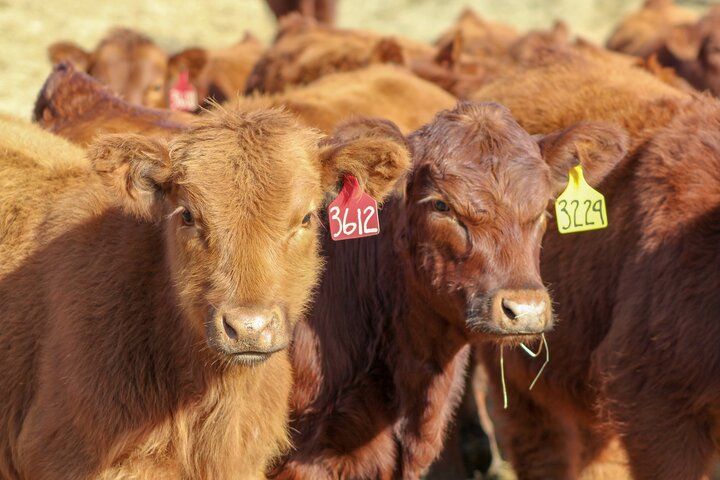Weaning time is just around the corner and cow-calf producers are now faced with the decision of calf placement after weaning. Producers have a few options for their calves after weaning:
- Calves can be sold immediately after weaning,
- Calves can undergo a preconditioning period before sale,
- Calves can be retained as long or short yearlings and then sold, or
- Calves can enter a feedlot with retained ownership.
What Is Preconditioning?
A preconditioning program is a period of time, typically a minimum of 45 days, in which a cow-calf producer will work to build the health status of the weaned calf prior to sale. Calves are also “bunk broke” during this time and acclimated to a dry feed diet. If calves are sold at the sale barn, sold via an internet auction, or sold to the same feedlot each year, premiums may be awarded to those producers who precondition their calves. Before a producer begins a preconditioning program the economics of the program need to be evaluated carefully.
Benefits of Preconditioning
Two potential gains associated with preconditioning are added premiums at calf sale and added calf weight.
Expenses of Preconditioning
Some costs associated with preconditioning programs include: labor, vaccinations, death loss, additional feed costs, and interest expenses on borrowed money. Two additional factors to consider are, the seasonal patterns of the cattle market and the price slide on increased calf weights.
Benefits in the Feedlot
In a Drovers article, Dr. John Maday, a Bovine Veterinarian, described the benefits of preconditioning for all aspects of the beef industry. Dr. Maday stated that the long-term average death loss at JBS Five Rivers feedyards, the feedlot he consults for, had always been roughly 1 percent.
In three years, that value has increased to 2 percent. Initially the increase in death loss was attributed to drought and poor nutrition early in the calves’ lives.
However, even after a year of increased moisture, the death loss average did not decreased.
Dr. Maday evaluated cattle that had been preconditioned for 45 days prior to feedlot entry and found that those calves experienced one-third the morbidity and one-half the mortality of those calves that were not preconditioned.
Preconditioned calves also gained 0.3 more pounds per day compared to calves that were not preconditioned in his study.
Conclusion
A preconditioning program is not for every cow-calf producer.
Not only should the factors stated above be considered, but producers have to determine:
- how a 45-day retention of calves will affect their grazing program,
- if they have the proper facilities to feed calves and bunk break them, and
- if they have the extra time and labor to dedicate to the weaned calves.
As an industry, the need to better prepare calves for the feedlot in terms of stress, health, and getting cattle ready to eat a concentrated diet is a must.
If more calves are “feedlot ready” the beef industry will see improved cattle health and feedlot performance while potentially reducing the use of antibiotics.
Topics covered:
Cattle health & BQA, Vaccines & medications, Management & best practices

